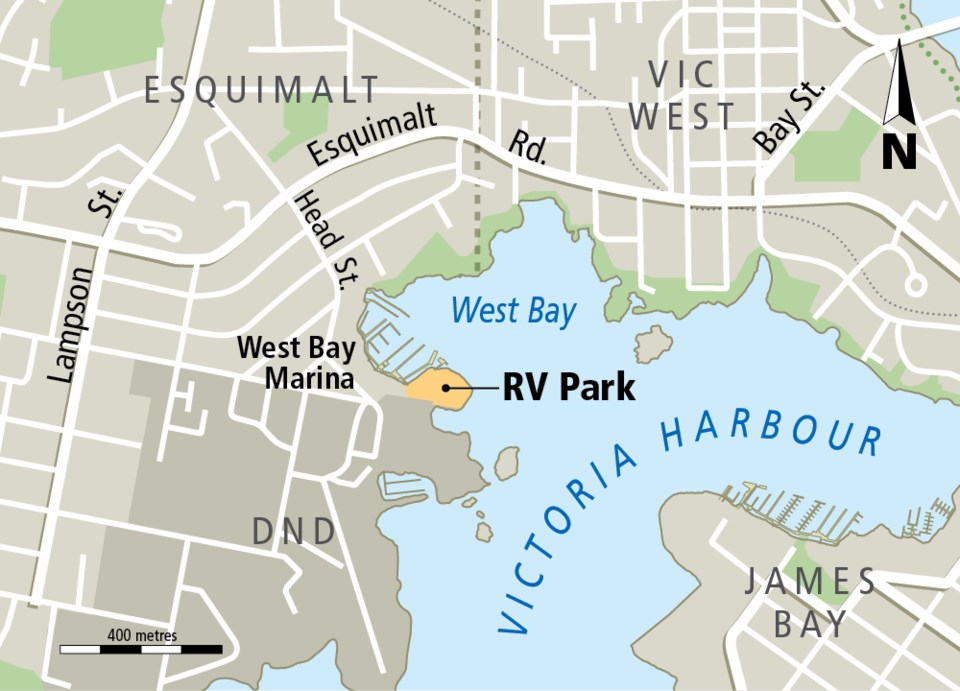After more than 30 years, the Westbay Marina RV Park will close at the end of February. But the two First Nations that own the site have “great plans” for upgrading and reopening an RV park of their own on the property, said Esquimalt Mayor Barb Desjardins.
“It’s wonderful because that is a great place for tourism in Esquimalt,” she said Monday. “It’s a huge positive.”
The 3.2-hectare site has the distinction of offering RVers a year-round water view of downtown Victoria, which can be accessed by a 40-minute Inner Harbour trek along Westsong Walkway or a quick trip on a water taxi.
The new facility will be called the Salish Seaside RV Haven, and run by Esquimalt and Songhees First Nations with a projected opening date in July.
“We’ve been invisible far too long and we want to play a part in the economy of the harbour,” Esquimalt Chief Andy Thomas told the Times Colonist in July 2005.
“The existing part will be brought up to a much higher, more modern standard,” he and Songhees Chief Ron Sam said in a letter to council in November. Design plans are already in the work with hopes for “complete construction in time to reopen as a brand new first-class park in time for the summer’s season, 2017.”
The project is intended as a “showcase” for the First Nations and the municipality, with intentions to forge relationships with harbour ferries, whale watching businesses and local stores, groceries, and businesses to enhance the experience for RVers, they wrote.
Marina owner Mark Lindholm had leased the park for 40 years but the First Nations, who purchased the site from Transport Canada in 2005 for $1.88 million, stated then that the Westbay RV lease would continue for only 12 years.
The RV park opened in 1986 in response to the push on tourism during Expo 86, and currently has 61 parking spots, ranging in price from $40 to $55 a night for full hookups.
“It certainly is a disappointment for us, as we would have liked to continue,” Lindholm said.
The park will boast a prominent First Nations theme and architecture and be reconfigured with larger spaces in order to accommodate more of the “big rig” RVs that are more common, as well as a prominent First Nations theme and architecture, said Laurie Armstrong, who is involved with the project.
There will also be a new amenities building, with an upstairs meeting and recreation room to accommodate travelling groups.
It is hoped that a gallery of First Nation arts and crafts will be part of a new store located in the historic guardhouse on Head Street, which will function as the entrance to the park.
“It’s an exciting project,” Armstrong said in an email, and given the land is not on reservation, “a chance for the First Nations to show that they can ably compete on a level playing field, while still maintaining their cultural identity.”
The new RV park won’t affect the marina, which has 175 slips and “no more capacity” for more boats, Lindholm said.
Now that the decision is made, he said he has plans for additional office and retail space and possible relocation of the restaurant as part of a marine village format.



